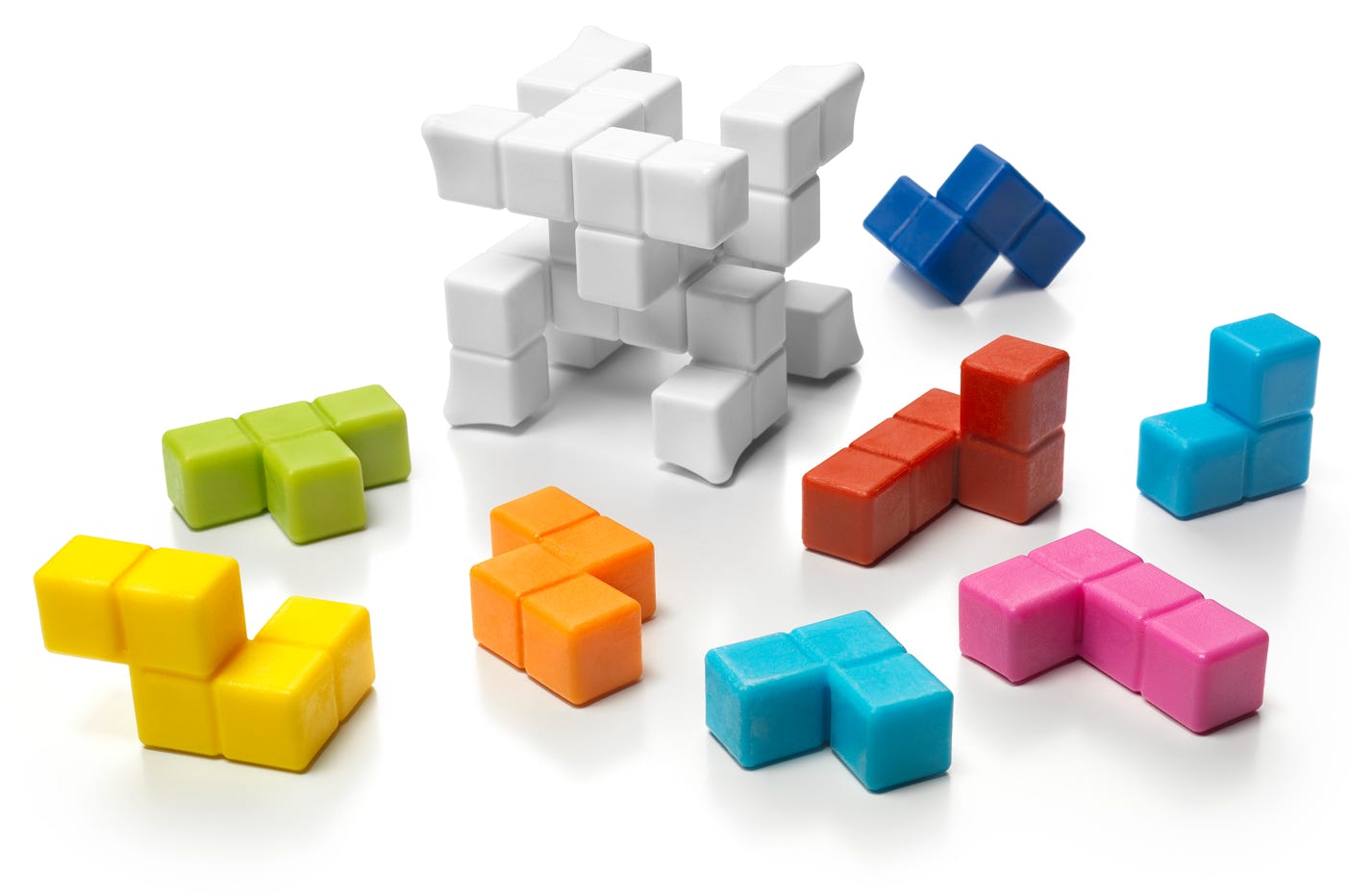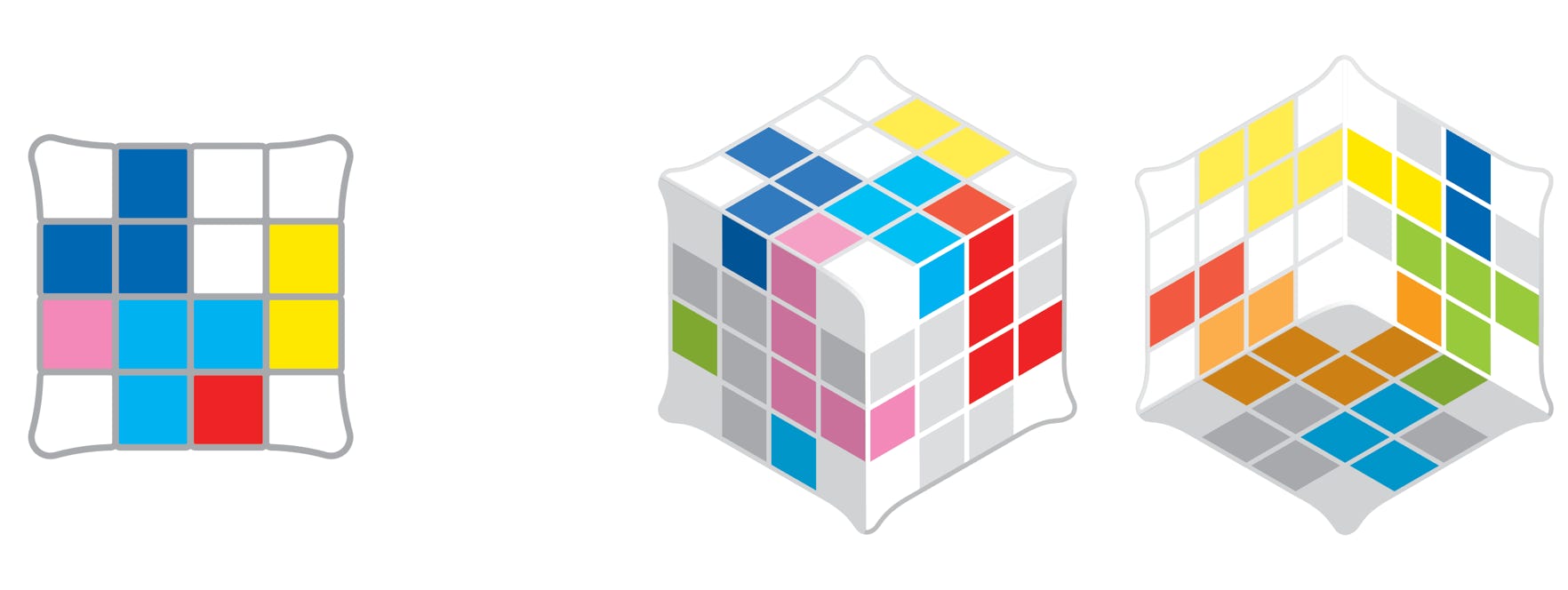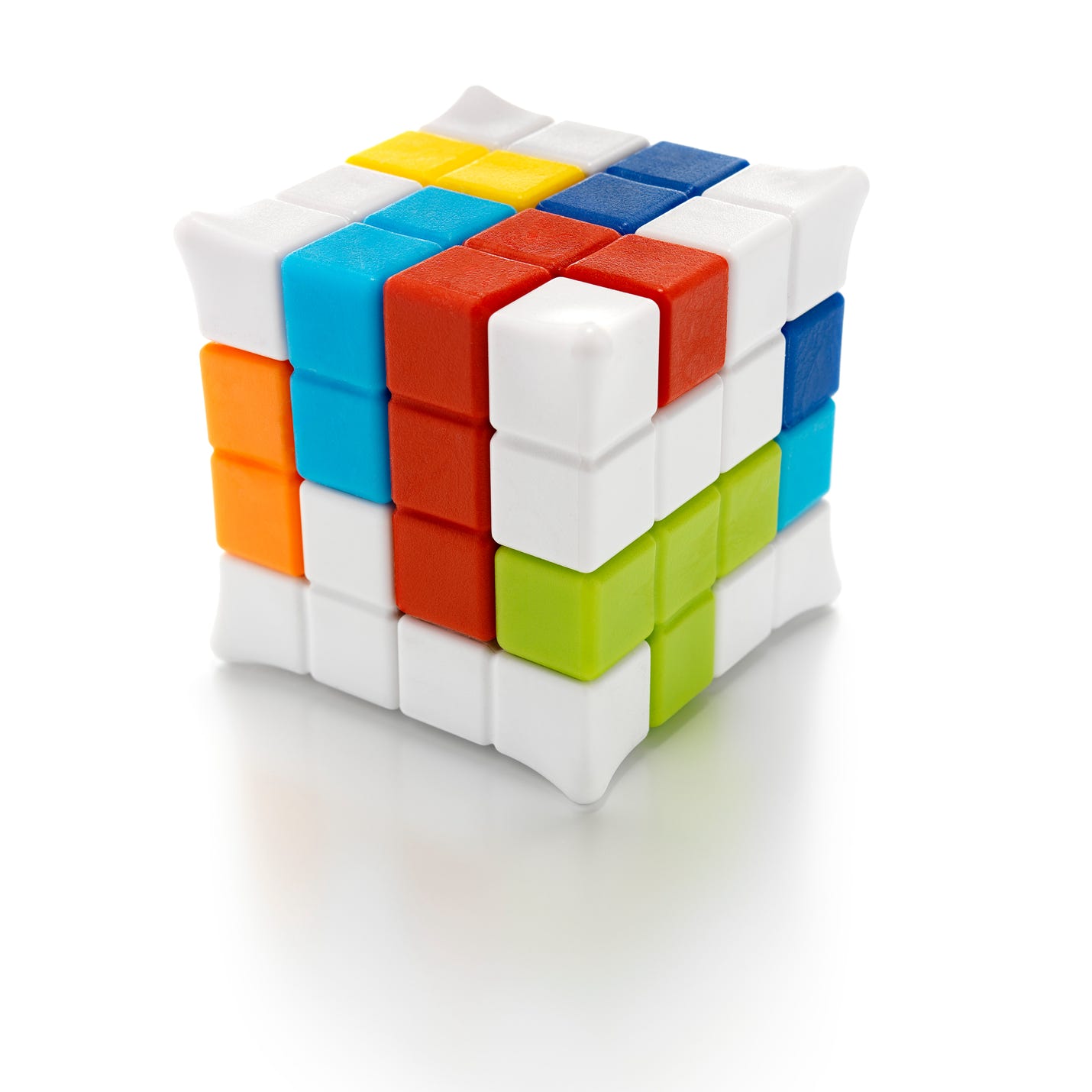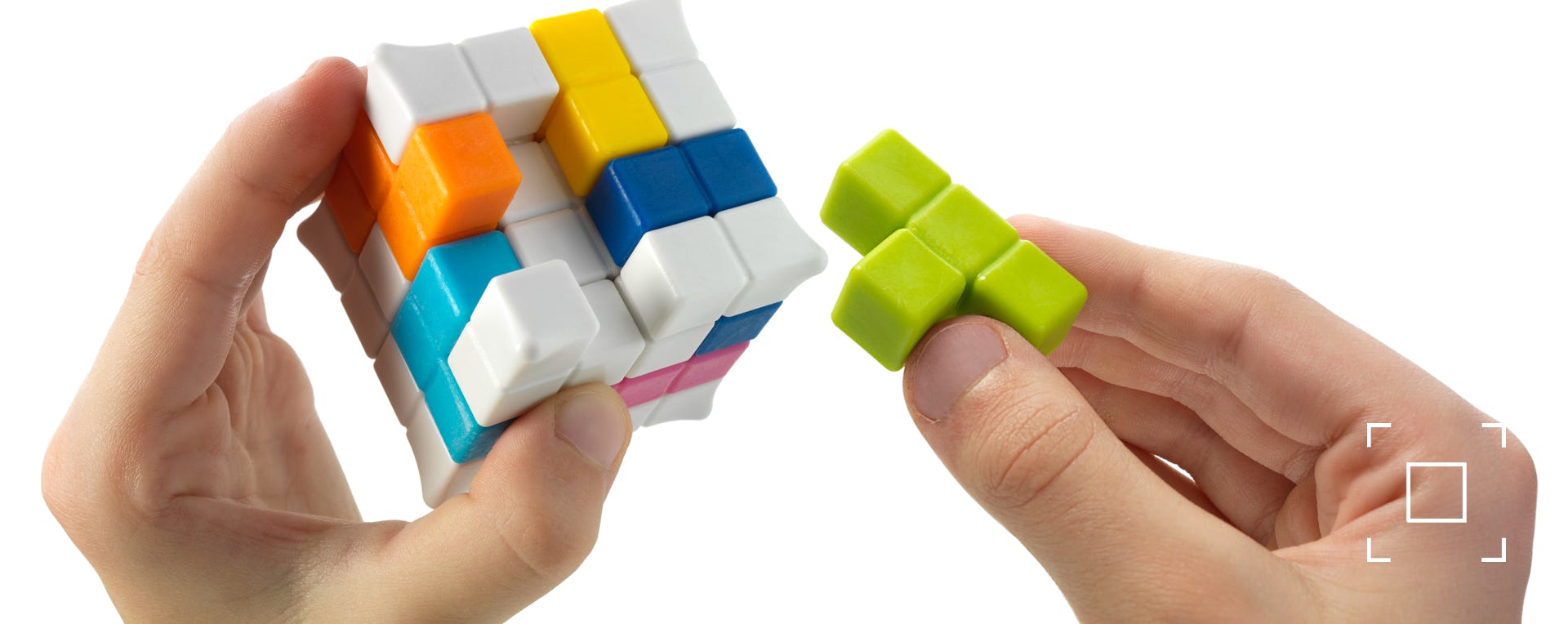
Plug & Play Puzzler
The product development of Plug & Play Puzzler (for SmartGames)
Raf Peeters, January 2020
This year I designed Plug & Play Puzzler for SmartGames, because I wanted to create a puzzle game in a different format than the usual ones that always include a game board. In 2018 I already developed SmartCar Mini, so it would be nice if the result fitted inside a similar packaging and could be sold for the same, relative cheap price of 6,99 euro. But I wanted to make it abstract, because SmartCar Mini appeals more to children and I preferred to design something for young and old. The chances of making the next big hit, something like a Rubrics Cube or an IQ-Puzzler are always very small, but at least you can try ;-)
Although this is a completely different type of puzzle (Plug & Play Puzzler is a packing problem, while Rubrics Cube is a sequential movement puzzle) they have one thing in common: most people will probably just like to play with it, because it’s fun to manipulate. They are both fidget toys with the extra benefit of doubling as a puzzle game. I was also inspired by the feeling of playing with PLUSPLUS TOYS, a construction toy with a single shape in different colors. The pieces of this toy are probably made of PE plastics and feel a little greasy and flexible.
I already made two Cube Puzzlers, but these use a transparent game board, so you always need a table to play. For Plug & Play Puzzler I wanted to get rid of the need for a table, so puzzle pieces should be held in place by friction. Some puzzle pieces can be part of 3 different sides of the cube. It looks like the puzzle pieces are almost wrapped around the structure of the cube. The white part of the structure of the cube is always the same, it can’t be altered. So it’s definitely not a twisty cube puzzle. The structure has a central core and every corner piece of the cube is part of the fixed structure, because they are needed to clamp in the loose, colored puzzle pieces.
The first thing we had to do was figure out if a cube like this could be filled up with a limited number of puzzle pieces in many different ways. Thanks to the programming of my new colleague Alain, we could find a white structure and combination of puzzle pieces that could be filled in more than 50 different ways. Similar to Zig Zag Puzzler, there was 1 pieces we had to use twice, again the small L-shaped one (this time in light blue).
The next step was to design the white frame and puzzle pieces, so that they could be mass produced. Because of the small tolerances, this proved to be much harder than anticipated. In the final product the frame is made of 10 white ABS pieces that are welded together, a central core (made of 2 parts) and 8 identical corner pieces (each one orientated differently). Normally some of the complex puzzle pieces would also be made of different parts (like the blue puzzle pieces of ZigZag Puzzler), but because I wanted the puzzle pieces to be flexible, this was no option. I was afraid that glued parts would break if they were bended. So we had to place the puzzle pieces in a more complex orientation inside the moulds, in order to make it possible that they could be produced in one piece and we didn’t need to assemble them later using glue.
Challenges always shows 1 of the 6 sides of a completed cube. Easier challenges show a side with many visible puzzle pieces. Harder challenges also show 1 side of the cube, but it’s not clear anymore how they need to be placed inside the cube. This happens when only a part of a puzzle piece is visible on the front side and the rest of the puzzle piece is on an adjacent side of the cube. Another reason why some challenges are harder than others, is the fact that you have 2 identical light blue puzzle pieces. If you see 3 blue adjacent blue squares in the challenge, this could be just one blue piece, but it could also result from two blue pieces adjacent to each other that are only partly visible. So in Plug & Play Puzzler, doing the setup is already part of the challenge, similar to ZigZag Puzzler (but easier).
Contrary to many other SmartGames, the white squares in the challenges actually indicate the position of white squares in the solution (this is of course the white frame of the cube). In many other games I developed, white squares or figurines indicate that the colour of that part is not revealed and must be discovered using logic and deduction. Examples of that are Zig Zag Puzzler, SmartCar5x5, both Cube Puzzlers, Brain Train and Walk the Dog.
Simple challenges are really easy, hard challenges are still doable. This game includes a little booklet with 48 challenges, but you can of course play it without a booklet too. Just remove the pieces and try to fit everything back in. Like the name suggest it’s plug and play. But without a setup, the challenge is a lot bigger, because you don’t know if the first pieces you put in, results in a solvable cube.
Here is a link to an instruction video on the YouTube channel of SmartGames.
UPDATE 2022: This year the packaging of Plug & Play Puzzler will be updated. It’s now a slightly bigger window box, to better show the size and quality of the game. The product and challenges remain the same.


Example of a challenge (left) and solution (right). The solution shows 3 sides on the front and 3 on the backside.

GAME RULES PLUG & PLAY PUZZLER
Before you start:
Remove all colored puzzle pieces by sliding them sideways out of the cube. TIP: Start with small puzzle pieces or with pieces that are not blocked.
1) Select a challenge. Challenges show 1 side of a completed cube. White pieces show the frame of the cube. Colors indicate the color of the puzzle pieces which are to be placed.
2) Put all puzzle pieces back inside the white frame of the cube:
• None of the pieces should stick out, the result must be a perfect cube.
• The colors of your solution on one side of the cube must match the colors of the challenge. This includes the position of the white squares!
• Sometimes there are multiple ways to place puzzle pieces in the frame with a similar result for the visible pieces in the challenge. If the challenge for example shows 3 blue adjacent squares, these could be part of different or the same blue puzzle piece. So doing the setup is already part of the challenge.
3) There is only one solution, which can be found at the end of the booklet.
Website ©2020 Raf Peeters
Products and images: © Smart
